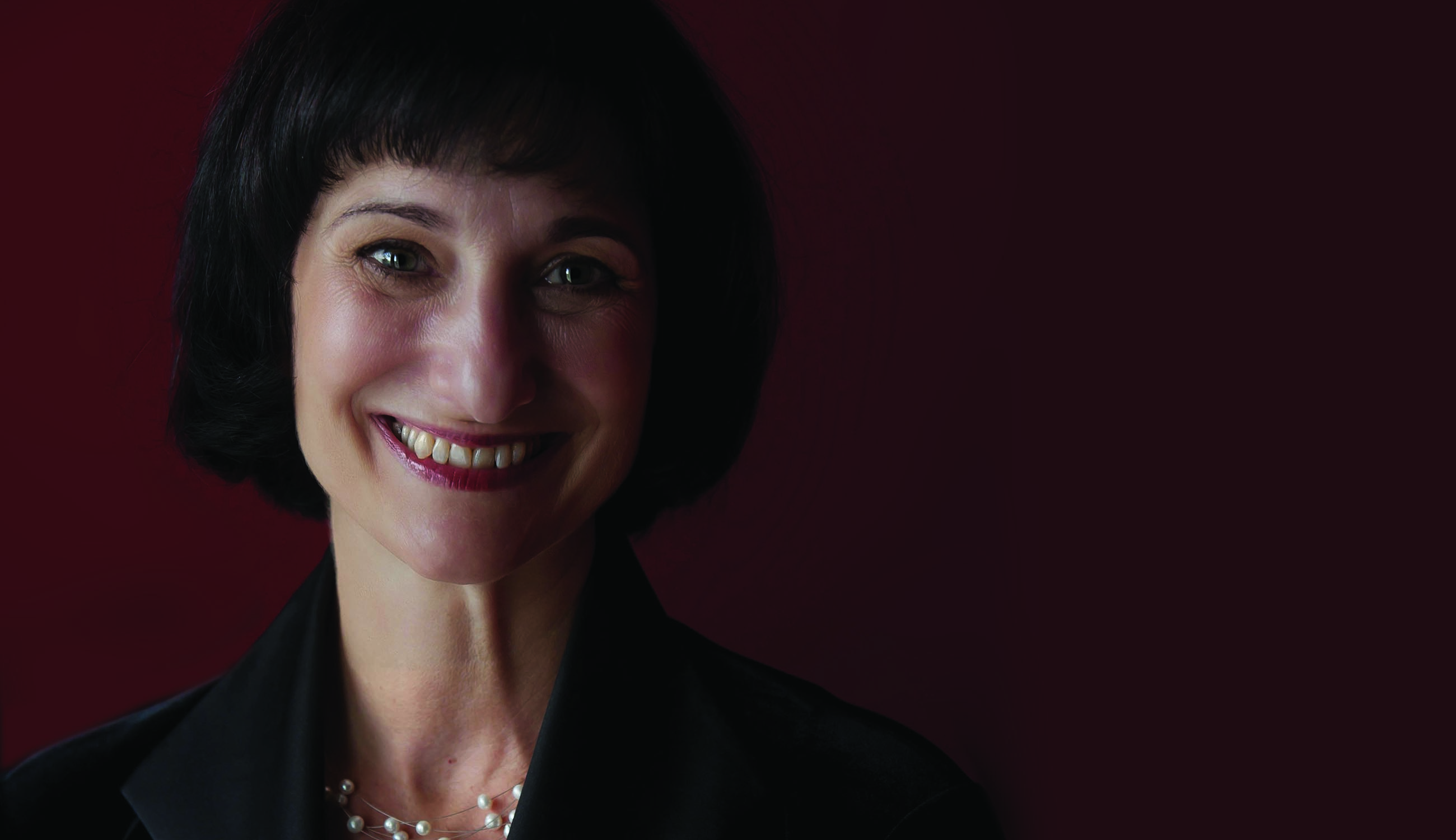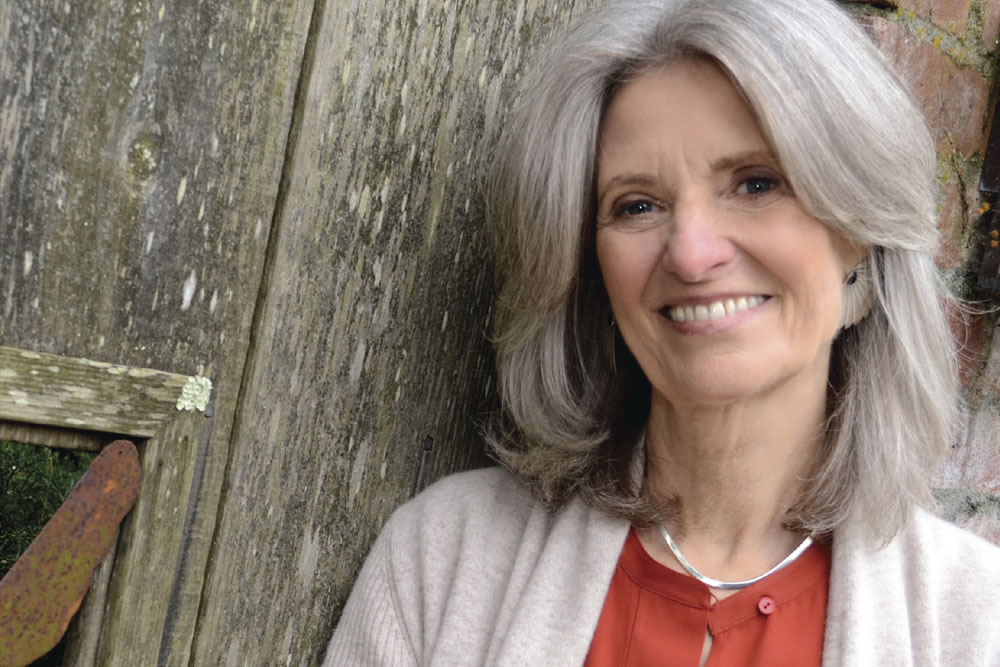Educational Innovation, City by City: Ilene Rosenthal ’74

Ilene Rosenthal ’74 is reimagining early literacy education and charting her own course in the tech world.
In the mid-2000s, Ilene Rosenthal ’74 was working at a company developing cutting-edge educational technology for school-age children. But the more she learned, the more she felt she and her colleagues were missing a crucial piece of the picture. Research was pouring in, and the findings were stark:
- Roughly half of the children entering kindergarten are one to three years behind their peers academically:
- 88 percent of those children never catch up.
- A child from an affluent background will have about 2,000 hours of literacy exposure before starting kindergarten, while a less affluent child might have 200 hours.
- The huge amount of important brain development occurs by age five.
Rosenthal realized that the children on whom she could have the most profound impact were the ones she wasn’t reaching: those who weren’t in school yet. She also realized that the burgeoning mobile technology revolution was about to provide the perfect opportunity to meet the unmet need. She took the plunge and launched her own start-up.
Seven years later, Rosenthal’s company, Footsteps2Brilliance, is reimagining early literacy education on a national scale. She and her colleagues have produced engaging reading games for young children that work on all devices—mobile, laptop, or desktop, Android, PC, or Mac—so that kids can learn at home, in school, in the library, even in the car. Her company is working in around 100 communities and school districts across the U.S.—and one of its most ambitious partnerships is about to launch in Wesleyan’s hometown, where Rosenthal’s education career began.
Rosenthal grew up in New Haven, down the road from Wesleyan. She first set foot on campus when her high school newspaper staff toured the all-male school in 1968. “We all said, ‘I want to go to Wesleyan’—jokingly,” Rosenthal recalls. “The next year, Wesleyan said they were going to take in women. At that point, when it became real for me, that became my first choice—there was no question.”
Rosenthal majored in music, focusing on piano—which she was already playing professionally—and even taught other students for credit. She also got a scholarship to study with Robert Pace at Columbia University in New York. Pace showed Rosenthal how to teach music “as a language,” she recalls. She picked up a minor in psychology, a subject that had always fascinated her. “It was four of my best years,” she says.
But, like many Wesleyan students before and since, Rosenthal graduated without a job lined up. She decided to try music teaching. “I applied to 29 private schools around the Boston area, and I think I got 30 rejections,” she says. Then she saw a New York Times article about a teaching method championed by Pace. She scrawled her phone number on it (the article was printed, of course, and the phone was a landline), photocopied it, and asked schools to hand it out to students as they left for the day. “Soon I had so many students in my private school that I started needing to hire more teachers,” Rosenthal recalls. “An entrepreneur was born.”
Rosenthal eventually went to law school and worked in the legal world, becoming a prosecutor and then general counsel for the Software and Information Industry Association, a trade group for digital publishers. Then, in 1993, one of the association’s board members asked her to help found a company to create educational video games. It was the early days of the internet: The World Wide Web was only two years old, and those who connected at all did so through painfully slow dial-up modems. But Rosenthal saw how the internet could connect home and school in a way that had been unthinkable, and transform parents’ involvement in their children’s education.
Her company, Lightspan, piloted educational software that teachers could use with children at school and that parents could also use at home. Hundreds of schools adopted the program, and studies showed that the products improved students’ academic performance.
But the more Rosenthal studied the education literature, the more she realized that educational inequities begin long before children ever set foot in a school. “If we’re going to correct this disparity in our country,” she says, “we have to start at a really early age.”
She found a like-minded thinker in Eugene Narciso, a former elementary school teacher she had met when Lightspan was acquired by Plato Learning, where he was working; they later reunited at Achieve3000. In 2011, the two founded Footsteps2Brilliance, an education technology company aimed exclusively at pre-K through third grade.
“Early learning is our chance of curing cancer,” Narciso says. “If we can help kids during the formative stages of their brain development … we can really determine kids’ trajectory and slingshot them the way we want them to go.”
The two founders still needed a product and a way to get that product to customers. The light bulb went off while Rosenthal was visiting her nephew, also an entrepreneur. He showed her a movie on an early iPhone. Rosenthal immediately realized that the internet was no longer something that people would access only, or even primarily, from traditional computers at home or work. Once smartphones and tablets went mainstream, the internet would be accessible everywhere.
 Rosenthal envisioned that literacy lessons could, likewise, reach kids far beyond the classroom: at after-school programs, at the library, at home. But to do that, her software would have to work seamlessly on Windows machines at schools and libraries, as well as on parents’ Kindles and Apple and Android tablets and phones. She challenged her developers to write software that would be compatible with all devices. “I said, we need to be able to have one code that we can scale to everybody overnight,” Rosenthal says. “I have a fabulous technology team that actually figured out how to do that. Even today I don’t know anybody else who builds with one code base.”
Rosenthal envisioned that literacy lessons could, likewise, reach kids far beyond the classroom: at after-school programs, at the library, at home. But to do that, her software would have to work seamlessly on Windows machines at schools and libraries, as well as on parents’ Kindles and Apple and Android tablets and phones. She challenged her developers to write software that would be compatible with all devices. “I said, we need to be able to have one code that we can scale to everybody overnight,” Rosenthal says. “I have a fabulous technology team that actually figured out how to do that. Even today I don’t know anybody else who builds with one code base.”
“She took a big risk,” Narciso says. “Back then it was like, will this catch on, will people adopt this? Ilene saw down the road and said, this is the next mega-trend. Mobile technology will outpace traditional computers.”
Footsteps2Brilliance’s software is colorful, visual, playful, and responsive; it engages the visual, the auditory, and the tactile learner. A child can touch anything on the screen—an object, a word, a number—and the device will “say” it. The software is also fun. When it asks the user to identify a bee in a picture, touching the bee causes it to puncture a balloon and make a bang. In a drawing exercise, getting a letter’s shape correct rewards you by saying, “You are a star!” A mistake, and the program adapts on the fly and offers help by providing dots on the screen that the user can connect.
Rosenthal’s background as a music educator is evident in the software, too. One exercise encourages the user to sing, “Baa baa, black sheep, have you any wool?” along with a program that spells out and illustrates each word.
“If you can sing eight nursery rhymes by the time you’re in kindergarten, there’s a very high likelihood you’ll read by third grade,” she explains.
All content is also available in Spanish. Eighty percent of children who are learning English as a second language in the United States are from Spanish-speaking households, Rosenthal says.
The most visionary design innovation may not be the software itself, however, but rather how it’s disseminated. Most education software is sold to schools, and applied by teachers to students. Rosenthal and Narciso decided instead to pitch mayors and superintendents on a “model innovation city” concept, wherein high-level policymakers make Footsteps2Brilliance available to all pre-K children. Rosenthal describes it as putting a “geo-fence” around a city and reaching everyone inside the fence at once.
“The old licensing structure from past organizations was a transactional relationship: how many kids need treatment, we would do a purchase order,” Narciso says. “We asked, what if we were to activate the entire city?”
The first district to sign on was Napa County in California, whose superintendent had worked with Rosenthal for years. They did a pilot program in summer 2013. “That changed the world,” Rosenthal says. “People didn’t know you could use mobile technology with young kids.” The district remains a client to this day. There are now around 100 model innovation cities, in states from California to Virginia to Texas to Hawaii; Rosenthal estimates her software has reached almost a million children. A new chapter opened in 2017 when Wesleyan president Michael Roth visited Rosenthal on a swing through Washington. After seeing Rosenthal’s data, Roth offered to introduce her to Middletown’s new superintendent, Michael Conner, who was already thinking about how to reach children before they entered his schools. Rosenthal presented her program to Conner and several colleagues in January. By March, the leaders had committed to roll out the software districtwide. “A lot of districts, even education [leaders] nationally, have focused on the achievement gap,” Conner says. “But we haven’t put an emphasis on closing the preparation gap and the opportunity gap.”
An official launch was set for November 13, and was attended by Middletown Mayor Daniel Drew and a team of literacy ambassadors to help students and parents learn to use the software. The district is seeking donations of tablets and other devices so that every pre-K student in Middletown—some 800 total—can use the software, says Enza Macri, associate superintendent at Middletown Public Schools.
“Instead of you come to school, we’re coming to you, and we’re bringing something to you, for free, so that you can support your child at home,” Macri says.
Obviously, Rosenthal is not your average tech CEO, and Footsteps2Brilliance is not your average tech company. The headquarters, far from the gleaming campuses of Silicon Valley or Boston, is situated in an ornate house in Washington, D.C.’s leafy Woodley Park neighborhood that used to belong to the Thai embassy. It’s also Rosenthal’s home, decorated with eclectic artwork and objects from around the world. A grand piano sits by the doorway; Rosenthal says she no longer plays professionally, though still plays for fun—in the increasingly rare moments she’s not traveling to meet an education leader, that is.
“I love that she doesn’t stay away from the customer,” says Narciso. “To see eye to eye with these leaders, you have to understand what they’re dealing with. The only way to get that is jumping on a plane. Ilene is really accessible.”
Rosenthal credits her one-of-a-kind career to coming of age at a time when there were few expectations for women entrepreneurs.
“In some ways, by having no pressure on me, it gave me the freedom to explore whatever really interested me,” Rosenthal says. “But I always came back to teaching.”
Screen Time: Brief and Beneficial
Not everyone embraces digital devices as learning aids. Some tech workers, concerned about the impacts of the products they have helped create, send their kids to screen-free schools.
In moderation, however, technology can actually be beneficial, Rosenthal says, especially for children who lack access to other educational resources. The American Academy of Pediatrics recommends no more than one hour a day of screen time for children age 2 to 5. Footsteps2Brilliance’s program requires just 15 minutes a day, three days a week. Even with that relatively low-level exposure, results have been impressive. In a study by Stanford University researchers, students who used Footsteps2Brilliance so far surpassed those using another company’s software package that the company actually spun off a learning lab powered by Footsteps2Brilliance. Some districts have seen students who use the software achieve double-digit gains on third-party reading assessments.
Kismet Collaborators
On a trip to Middletown last summer, Rosenthal visited Anna Shusterman, a Wesleyan psychology professor. Several years ago, Shusterman and her students had developed games to teach math to young children, and had sent undergraduate students into Middletown schools as math “ambassadors.” When she and Rosenthal met, they discovered that their visions aligned so closely it was almost uncanny.
“I almost fell over,” Shusterman says. “I said, ‘We can help. We have a model for this. We know how this works. We have a lot of ways and strategies to engage the community.’”
In some ways, Shusterman’s and Rosenthal’s approaches are actually quite different. Shusterman’s math games were designed to be “extremely low-tech” and “deceptively simple” so that children could learn them quickly, she says. Students produced them by hand in the Wesleyan machine shop. But Shusterman found that Rosenthal’s digital literacy technology was equally easy to pick up. “We’ve both solved that design problem in different ways,” she says. “I could easily imagine any kid figuring out how to use it very quickly. It was really smartly made, beautifully made.”
Shusterman is on sabbatical, but next fall she will have students serve as literacy ambassadors and study the effectiveness of the Footsteps2Brilliance rollout. The combination of a highly engaged school system and an academic partner doing a rigorous evaluation will make Middletown a national model, Rosenthal says.



